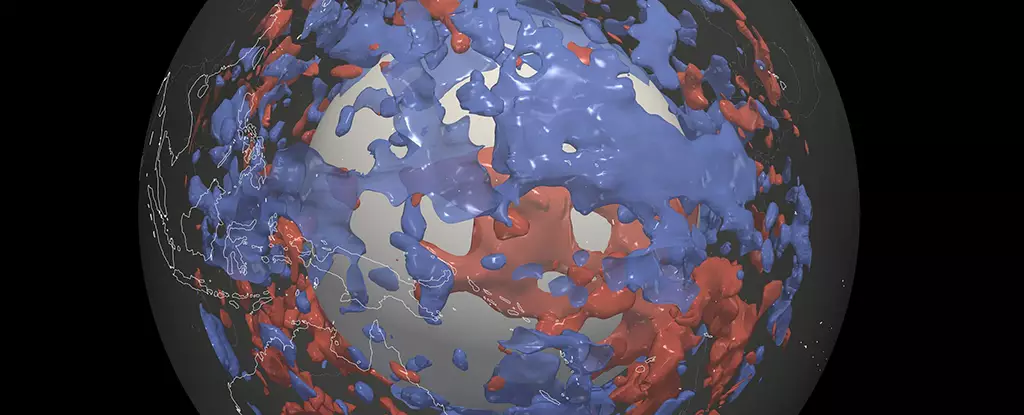Earth’s interior remains one of the most enigmatic realms of our planet, and understanding its composition and structure has been a priority for geoscientists for over a hundred years. Seismic waves, which are generated by earthquakes and other geological activities, act much like the auditory signals we hear in music, enabling scientists to decipher the hidden qualities of Earth’s subsurface. The intricacies of these waves, which travel at varying speeds through different materials, provide critical insights into geological phenomena. Recent advancements, particularly the integration of supercomputing power, have revolutionized the way we interpret these seismic signals, allowing for unprecedented explorations of Earth’s lower mantle.
A groundbreaking research initiative led by the ETH Zurich and the California Institute of Technology has recently shed light on previously obscured aspects of the lower mantle. Researchers utilized the extraordinary capabilities of the Piz Daint supercomputer to analyze an extensive array of earthquake wave data. This ambitious endeavor enabled the team to construct a detailed map that unveils the substructures beneath our feet, revealing the remnants of tectonic plates in unexpected locations. These seismic imaginings suggest a complex history of geological processes that challenge conventional wisdom about the Earth’s mantle.
What makes this research particularly compelling is the discovery of large, dense rock formations resembling ancient tectonic plates, located far from known subduction zones. Typically, these remnants should subside closer to the event of their subduction, but the high-resolution model introduced by the researchers indicates a more widespread distribution throughout the mantle. This raises critical questions about the nature and movement of these geological formations. As Earth scientist Thomas Schouten articulates, the findings imply that structures previously believed to be localized may extend over vast regions of the mantle, suggesting a reevaluation of our geological maps.
The presence of these unusual formations compels a reconsideration of our understanding of geological history. Schouten proposes that these chunks may have diverse origins beyond the traditional plate-on-plate collision narrative. The complexity of the data suggests a range of possibilities—perhaps these formations represent materials that have persisted through the eons, such as ancient, silica-rich compounds lingering since the Earth’s mantle’s inception approximately four billion years ago. Alternatively, they could be deposits from the accumulation of iron-rich rocks shaped by significant mantle movements across geological time frames.
The implications of these discoveries underscore the vast potential contained within the Earth’s mantle and the continuing need for innovative research methodologies. The current findings set the stage for further investigations focused on identifying the specific materials constituting the detected rock formations. Understanding the composition and origin of these remnants could significantly enhance our grasp of seismic activity, mantle convection, and the overall geological evolution of our planet. Each distinct formation could reveal a unique narrative about Earth’s history, offering insight into long-standing geological mysteries.
The ongoing research at the intersection of advanced computing and geoscience illustrates the potential for breakthroughs in our comprehension of Earth’s enigmatic interior. As the team at ETH Zurich and Caltech continues to delve deeper into seismic wave analysis, we stand on the brink of transformative discoveries. The mysteries lying beneath the surface may soon be illuminated, granting us a clearer understanding of the forces that have shaped our planet. Each seismic wave not only represents a vibration through the Earth but also unravels the ongoing story of our planet’s dynamic past, urging us to listen closely to what lies beneath our feet.

Leave a Reply